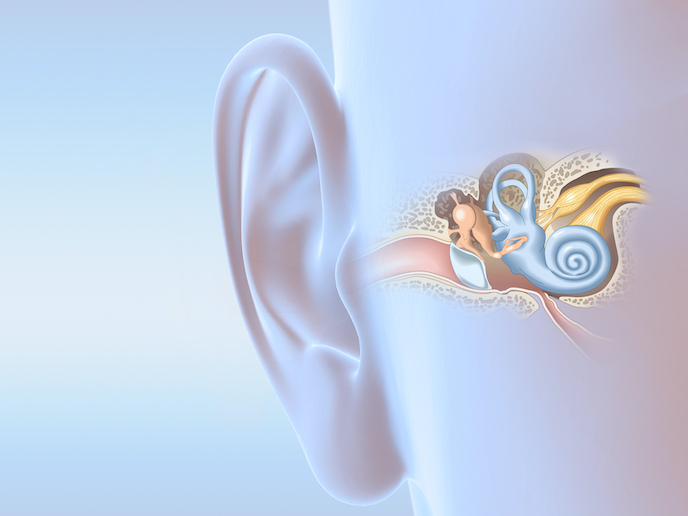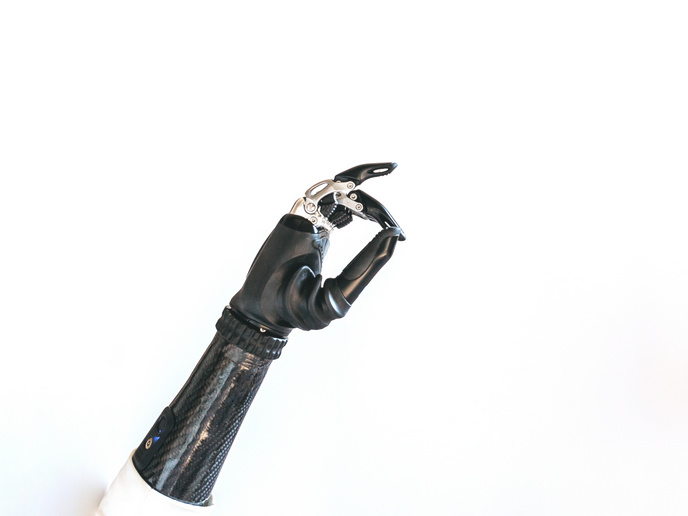3D printable, collagen-based hearing implants come one step closer
Conductive hearing loss (CHL) is a condition that is related to malfunctioning or traumas of the middle ear. It affects more than 5 % of the population worldwide, and more than 15 % of the elderly. With the support of the Marie Skłodowska-Curie Actions programme, the COLLHEAR project has been developing a novel, printable hearing implant to replace the small bones of the middle ear, known as ossicles. “I wanted to rethink the design of the prosthesis,” says principal investigator Mario Milazzo. He set out to define new geometrical shapes, made out of collagen, optimised for performance and to meet the demands of 3D manufacturing technologies. “Current manufacturing technologies for middle-ear implants have not considered 3D printing as a viable option which, I believe, can lead to the best prosthetic solutions in terms of shape and functionality,” he explains.
Next-generation hearing aids
Milazzo, who is based at Sant’Anna School of Advanced Studies, printed prototypes at Massachusetts Institute of Technology (MIT) and Tufts University in the United States of America, where part of the project was conducted. The 3D printing process presented many challenges. “The devices are tiny and printing in the order of millimetres can be difficult. Selecting the right manufacturing parameters is complex,” notes Milazzo. The prostheses are made out of collagen type 1 and hydroxyapatite, a naturally occurring mineral form of calcium. “These are the native components of bones,” explains Milazzo. Printing these materials was also problematic: “Fine-tuning the density and viscosity of the composite to make 3D printing reliable was challenging,” he adds. However, he managed to proceed and went on to test the prostheses in human temporal bones. “Due to administrative and ethical issues, the prostheses have not been placed in actual patients yet, although this will be my final – and exciting – goal.”
Performance
The results were encouraging. The acousto-mechanical assessment showed performance that is comparable to commercial prostheses. “But our device has the benefit of being made of a more biocompatible material,” says Milazzo. This should make the implants less susceptible to rejection. To find out if this was the case, Milazzo put the printed implants into a bioreactor, a piece of equipment able to reproduce specific physico-chemical conditions that mimic the final targeted environment in which the prosthesis will be used. “I took advantage of a bioreactor previously designed by some of my Italian collaborators, but I customised it for my specific application,” adds Milazzo. The tests revealed construct’s ability to host epithelial and mesenchymal cells on the prosthesis surfaces, a promising outcome that opens up an exciting future for in vivo studies. The activities related to modelling, fabrication, and acousto-mechanical assessment took place in America, involving MIT, Tufts University and Massachusetts Eye & Ear – an institution affiliated to Harvard University. The biological assessment took place in Italy between Sant’Anna School of Advanced Studies and the University of Pisa.
Next steps
Milazzo is now actively discussing with the partners of the project and clinicians in the head and neck field new funding opportunities to further contribute to the micro-prosthetic field. “The Marie Curie fellowship has, indeed, given me the chance to widen my research horizons in terms of knowledge and skills, and to meet and work with top scientists across the world who contributed to my personal and scientific growth profoundly.”
Keywords
COLLHEAR, hearing implants, collagen, 3D printing, conductive hearing loss, hearing aids, ear, prostheses







